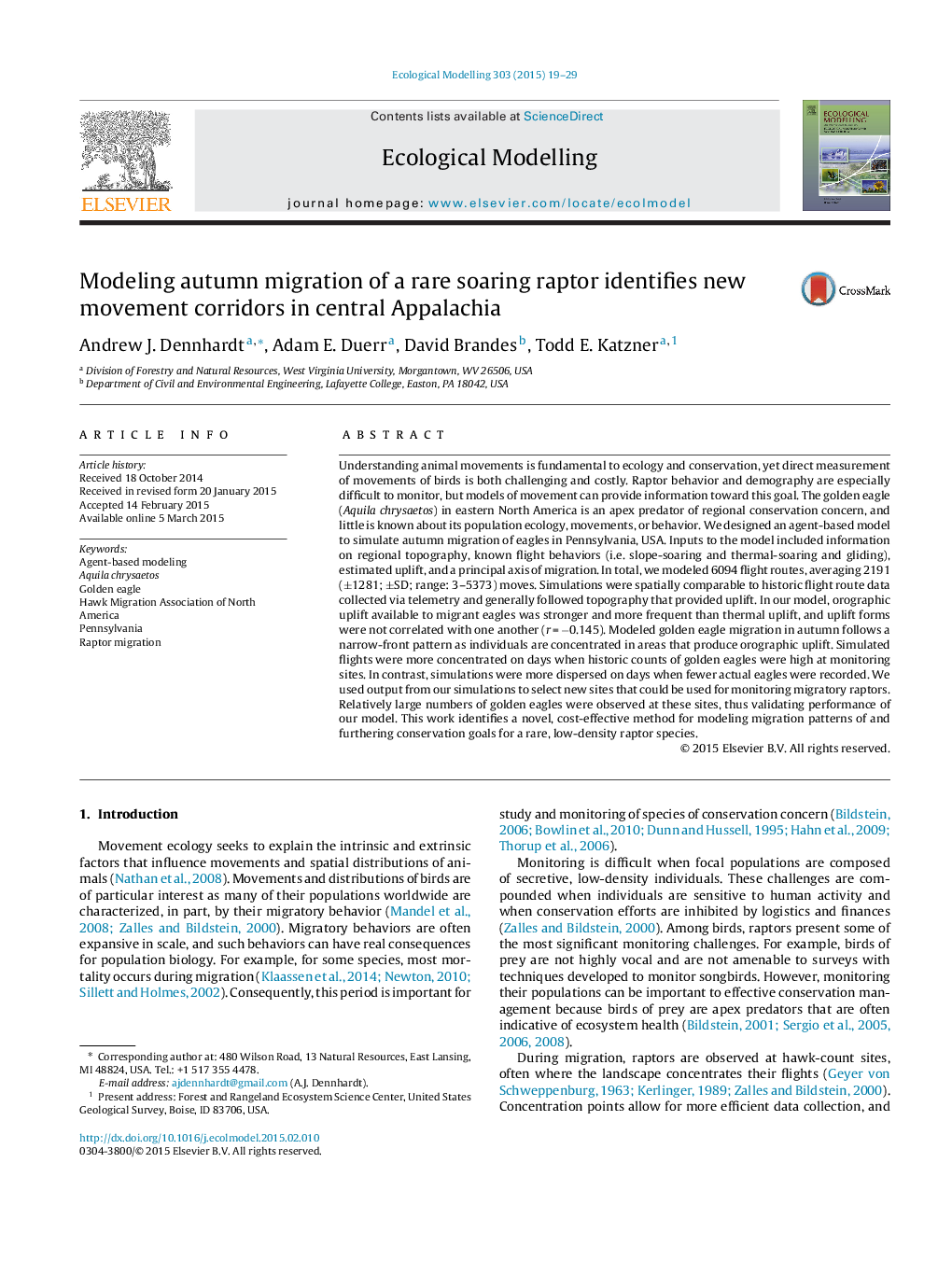| Article ID | Journal | Published Year | Pages | File Type |
|---|---|---|---|---|
| 4375774 | Ecological Modelling | 2015 | 11 Pages |
•We simulated autumn migration of golden eagles in Pennsylvania, USA.•We modeled 6094 flight routes with mean (±SD) moves of 2191 (±1281).•Orographic uplift was stronger and more frequent than thermal uplift.•Simulated eagle migration followed a narrow-front pattern in autumn.•Field observations verified that migrant eagles use sites identified by our model.
Understanding animal movements is fundamental to ecology and conservation, yet direct measurement of movements of birds is both challenging and costly. Raptor behavior and demography are especially difficult to monitor, but models of movement can provide information toward this goal. The golden eagle (Aquila chrysaetos) in eastern North America is an apex predator of regional conservation concern, and little is known about its population ecology, movements, or behavior. We designed an agent-based model to simulate autumn migration of eagles in Pennsylvania, USA. Inputs to the model included information on regional topography, known flight behaviors (i.e. slope-soaring and thermal-soaring and gliding), estimated uplift, and a principal axis of migration. In total, we modeled 6094 flight routes, averaging 2191 (±1281; ±SD; range: 3–5373) moves. Simulations were spatially comparable to historic flight route data collected via telemetry and generally followed topography that provided uplift. In our model, orographic uplift available to migrant eagles was stronger and more frequent than thermal uplift, and uplift forms were not correlated with one another (r = −0.145). Modeled golden eagle migration in autumn follows a narrow-front pattern as individuals are concentrated in areas that produce orographic uplift. Simulated flights were more concentrated on days when historic counts of golden eagles were high at monitoring sites. In contrast, simulations were more dispersed on days when fewer actual eagles were recorded. We used output from our simulations to select new sites that could be used for monitoring migratory raptors. Relatively large numbers of golden eagles were observed at these sites, thus validating performance of our model. This work identifies a novel, cost-effective method for modeling migration patterns of and furthering conservation goals for a rare, low-density raptor species.
